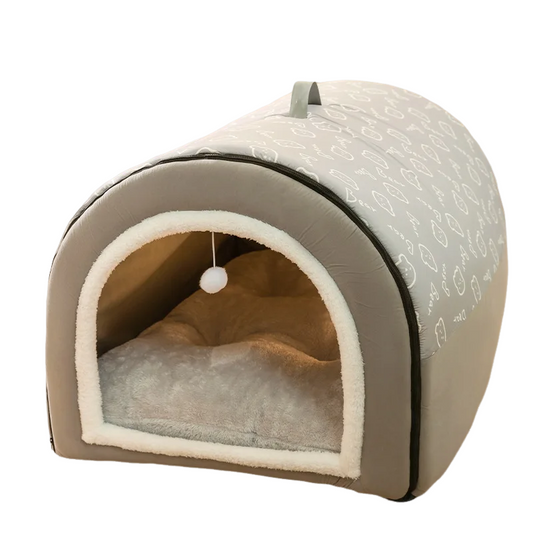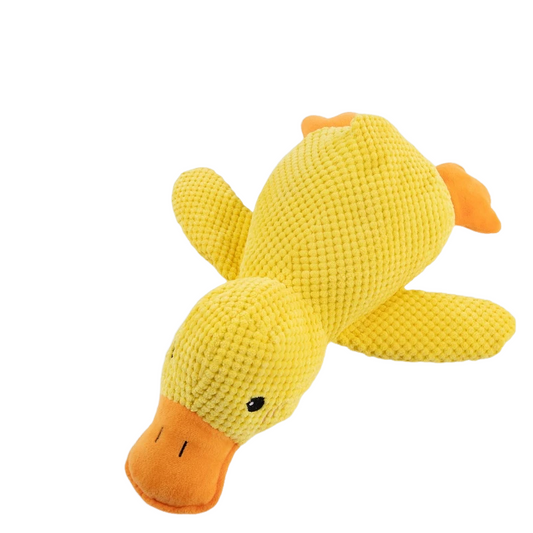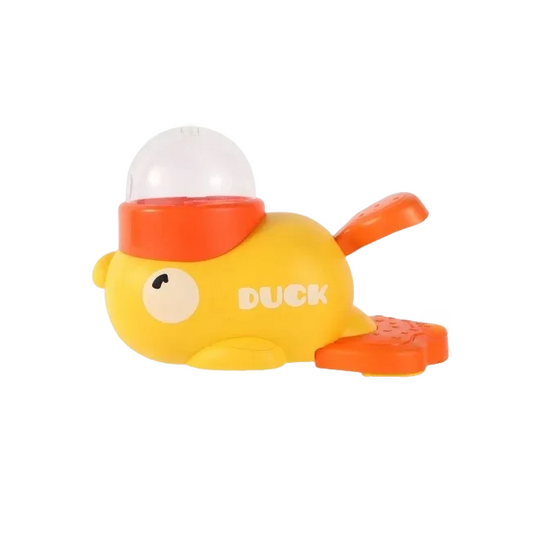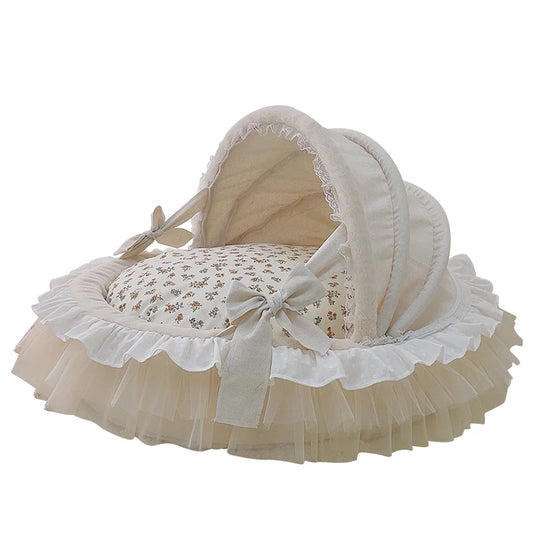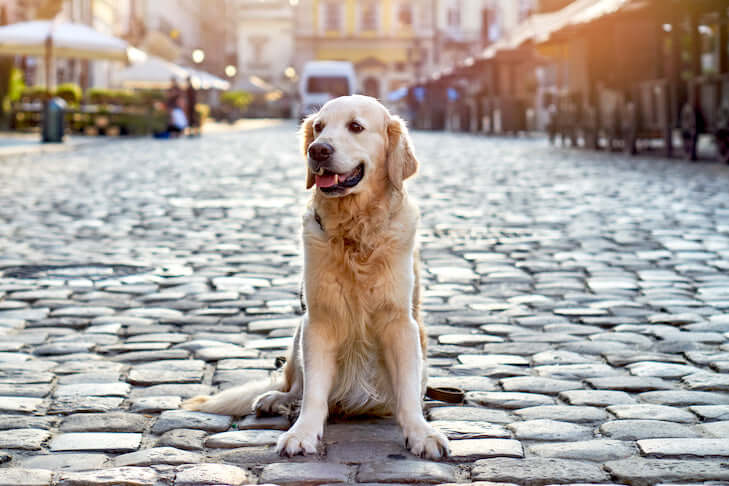
Pet Cultures and Fun Facts from Around the World: Detailed Exploration
Share
Introduction
Around the world, pets are not only companions but also integral parts of culture, history, and tradition. From Japan’s beloved “Maneki Neko” (Beckoning Cat) to the legendary Corgis of the British royal family, each country’s pet culture reflects its unique values and beliefs. In this blog post, we will take an in-depth look at fascinating pet-related customs, festivals, famous pets, and art from different countries, offering a glimpse into the rich and diverse world of pet culture.
Pets have played a significant role in human lives for centuries, and their influence spans from ancient mythology to modern social media stardom. Let’s dive into these captivating stories from around the globe, showcasing the deep bond between humans and their animal companions.
1. Japan: From the Sacred to the Everyday – The Fascinating World of Pets
Japan’s love for cats is well-known, but it’s not just because of their cute appearance. Cats hold a significant place in Japanese culture, blending sacred symbolism with everyday life. Their revered status has roots in mythology and tradition, making them more than just beloved pets.
1.1 Maneki Neko: The Legend Behind Japan’s Beckoning Cat.
The Maneki Neko (Beckoning Cat) is one of Japan’s most recognizable symbols of good fortune. Though its design is simple, the backstory is rich with mystery and folklore. One popular story dates back to the Edo period, when a poor monk living in a temple took in a stray cat. One day, a wealthy merchant passed by and saw the cat raising its paw as if waving him inside. Curious, he followed the cat and narrowly avoided being struck by lightning. Out of gratitude, the merchant donated money to the temple, and the cat became the symbol of good luck.Today, the Maneki Neko is seen at the entrances of restaurants, stores, and homes across Japan, believed to bring prosperity and success. Different colors of Maneki Neko have specific meanings: gold attracts wealth, green symbolizes health, and pink signifies love and harmony. This iconic figure is now a staple of Japanese culture, embodying a deep connection between humans and cats.
1.2 Cat Islands: Havens of Feline Companions.
Japan is home to several famous “Cat Islands,” such as Aoshima and Tashirojima, where cats far outnumber the human population. On Aoshima, for example, nearly 200 cats live alongside just 20 residents. These islands have become tourist attractions, where visitors can experience a unique atmosphere of co-existence between people and cats. The cats are well cared for by the locals, who consider them symbols of good fortune, especially for fishing communities. These islands serve as a powerful example of Japan’s respectful relationship with animals, particularly cats.
1.3 The Rise of Cat Cafes: A Modern Feline Phenomenon.
In urban areas of Japan, the rise of cat cafes offers a new way for people to enjoy the company of cats. These cafes provide a relaxed environment where customers can sip coffee while spending time with a variety of friendly felines. For many city dwellers who cannot own pets due to space or lifestyle constraints, cat cafes are a welcome retreat. Originating in Tokyo, this concept has now spread worldwide, becoming a global trend that reflects the universal appeal of cats.
2. Mexico: Día de los Muertos and the Spiritual Role of Pets
Mexico’s Día de los Muertos (Day of the Dead) is one of the most iconic and unique festivals in the world, celebrating the connection between the living and the dead. While traditionally focused on honoring deceased family members, pets have increasingly become part of this ritual. Many Mexican families now create altars (ofrendas) not only for their loved ones but also for pets who have passed away, showing that the love for pets transcends life and death.
2.1 Pet Altars: Honoring the Souls of Furry Friends.
On Día de los Muertos, families prepare altars to welcome the spirits of their deceased loved ones, and pets are no exception. These pet altars often feature photos, toys, favorite treats, and flowers to honor the beloved animals that were part of the family. The altar symbolizes the eternal bond between humans and their pets, even after death. For many, this tradition brings comfort, knowing that their pets are still remembered and celebrated during this sacred time.
2.2 Xoloitzcuintli: The Sacred Guide of the Dead.
The Xoloitzcuintli, a native Mexican breed, has a long-standing spiritual significance in Mexican culture. Often referred to as the Xolo dog, it was believed by the ancient Aztecs to be the guide for souls in the afterlife, helping them safely cross the underworld. Even today, the Xolo is a revered symbol during Día de los Muertos, representing the connection between life and death. The breed’s sleek, hairless appearance and ancient lineage have made it a cultural icon, frequently depicted in Mexican art and religious ceremonies.
2.3 The Return of Pet Spirits: A Time of Reunion.
In Mexican tradition, Día de los Muertos is not a time of sorrow but one of joyful reunion. Families believe that during this time, the spirits of their deceased loved ones, including pets, return to the earthly realm to enjoy a day with their families. People share stories of their pets, recounting moments of joy and companionship, ensuring their memories live on. This profound belief system highlights the significant role pets play in Mexican households, as they are cherished both in life and beyond.
3. United Kingdom: Pets in the Royal Household – A Symbol of Loyalty and Grace
In the UK, pets have long been part of the royal family’s household, symbolizing status, loyalty, and affection. Perhaps the most famous royal pets are the Corgis of Queen Elizabeth II, whose affection for the breed has turned them into global icons. But royal pets go beyond the Corgis, reflecting the deep ties between Britain’s monarchy and animals.
3.1 Queen Elizabeth’s Legendary Corgis: The Four-Legged Companions of the Crown.
Queen Elizabeth II’s lifelong love affair with Corgis began in her childhood. Her first Corgi, Dookie, joined the royal household in 1933, marking the beginning of a long and storied relationship between the monarch and this small, energetic breed. Over her reign, the Queen owned more than 30 Corgis, and they became inseparable companions. The Queen’s Corgis even had their own palace suite and were served gourmet meals by a royal chef. What’s more, these royal Corgis weren’t just pets; they became symbols of British royalty itself. The Corgis often appeared in official photographs and were frequently seen with the Queen at public events. Their presence in Buckingham Palace elevated them to a near-celebrity status, making them an integral part of British royal culture.
3.2 Royal Pet Stories: From Hunting Dogs to Modern Companions.
The love of pets in the British royal family extends beyond Corgis. Throughout history, British monarchs have had a variety of pets, from hunting dogs to small companion animals. Queen Victoria, for instance, was known for her affection for Pomeranians, a small breed that became wildly popular in Britain thanks to her influence. Today, the royal family continues this tradition, with pets like Lupo, the black Cocker Spaniel owned by Prince William and Kate Middleton, becoming media favorites.
3.3 Crufts Dog Show: Celebrating the Best of British Canine Culture.
The UK is also home to the world’s largest dog show, Crufts, held annually in London. Established in 1891, Crufts celebrates the best in dog breeding, training, and companionship. This event attracts dog lovers from around the globe and showcases the diverse roles dogs play in British society—from working dogs to beloved family pets. The show’s popularity highlights the UK’s deep-rooted appreciation for dogs and reinforces the importance of pets in British culture.
4. China: From Royal Pet to Modern Urban Companion
China’s pet culture has undergone a dramatic transformation over the centuries, evolving from the exclusive domain of the imperial court to a growing trend among modern urbanites. As the pet industry in China booms, pets are becoming more than just companions—they are now part of a cultural shift reflecting the country’s rapid modernization.
4.1 The Royal Pet: Pekingese and Shih Tzu in Imperial China.
In ancient China, pets were status symbols, particularly in the royal court. The Pekingese and Shih Tzu were two of the most prized breeds, beloved by emperors and their concubines for their beauty and grace. The Pekingese, with its lion-like mane and regal demeanor, was often kept by Chinese royalty and guarded by eunuchs. These dogs were seen as symbols of power, status, and protection, often appearing in paintings, sculptures, and palace artifacts. The Shih Tzu, meaning “Lion Dog,” was equally adored for its elegant appearance and calm temperament. According to legend, these dogs were bred to resemble the lion, a sacred animal in Buddhist mythology. They were cherished by the imperial family, and ownership of these breeds was strictly limited to the palace.
4.2 Modern Pet Culture: The Rise of the Pet Economy.
In modern China, pets have become a major part of urban life, particularly in cities like Beijing and Shanghai. As more young professionals embrace pet ownership, the pet economy has exploded, covering everything from pet food to fashion, grooming, and even pet hotels. The China International Pet Show (CIPS), held annually, is one of the largest pet trade shows in the world, showcasing the latest trends and products in the pet industry. In recent years, Chinese pet owners have developed a strong attachment to their pets, treating them as family members. Many urbanites celebrate their pets’ birthdays, take them to luxury grooming salons, and even organize pet weddings. This shift represents a new cultural norm in China, where pets are now seen as companions that provide emotional support in a fast-paced society.
5. United States: Pets in Popular Culture – From Movie Stars to Social Media Icons
The United States has one of the most diverse and dynamic pet cultures in the world. Pets are not only cherished companions but also central figures in American pop culture, appearing in movies, TV shows, and social media. From famous film pets to internet celebrity animals, pets have carved a niche in American hearts and homes.
5.1 Pets in Hollywood: From Lassie to Air Bud.
Pets have been an integral part of Hollywood since the early days of cinema. One of the most iconic movie pets is Lassie, the brave Rough Collie who first appeared in the 1943 film Lassie Come Home. Lassie’s courage and loyalty made her a household name, and she went on to star in numerous TV shows and films. The character became so beloved that Lassie is now synonymous with the ideal, heroic pet. Another famous cinematic pet is Air Bud, the Golden Retriever known for his exceptional sports skills. The Air Bud franchise, which began in the 1990s, captured the imagination of audiences with its heartwarming portrayal of a dog excelling in basketball, football, soccer, and more. These films highlighted the deep bond between humans and their pets, demonstrating how pets can play a pivotal role in both entertainment and emotional connection.
5.2 The Rise of Pet Influencers: Grumpy Cat and Beyond.
In the age of social media, pets have become internet celebrities, earning millions of fans worldwide. One of the earliest and most famous pet influencers was Grumpy Cat, whose perpetually grumpy face became a viral sensation. Grumpy Cat (real name Tardar Sauce) quickly became an internet meme, inspiring merchandise, books, and even a movie. The grumpy-looking feline amassed millions of followers, proving that pets can have as much star power as human celebrities. Following in Grumpy Cat’s footsteps, many other pets have achieved fame on platforms like Instagram and YouTube. Doug the Pug, a lovable and humorous Pug, boasts millions of followers thanks to his quirky costumes and funny videos. These “petfluencers” not only entertain but also bring in significant revenue through sponsorships, brand collaborations, and merchandise. This phenomenon underscores how pets are not just companions in America—they are cultural icons in their own right.
5.3 Pets as Emotional Support Animals: A Growing Trend.
In recent years, the concept of Emotional Support Animals (ESAs) has gained prominence in the U.S. Many individuals with mental health challenges or emotional disorders rely on pets for comfort and support. Whether it’s a dog, cat, or even a miniature horse, ESAs have become essential companions for many, helping alleviate anxiety, depression, and stress. This trend highlights the growing recognition of the emotional benefits that pets provide, making them integral to the mental well-being of many Americans.
6. Italy: Pets in Religious and Cultural Traditions – Sacred and Beloved
In Italy, pets hold a special place not only in families but also in religious and cultural traditions. Whether it’s through religious blessings or being celebrated in art, pets are seen as symbols of love, loyalty, and protection. Italy’s rich history and deep religious roots have shaped its unique pet culture.
6.1 Saint Anthony’s Day: Blessing of the Animals.
Every year on January 17th, Italians celebrate Saint Anthony the Abbot, the patron saint of animals, with a special ceremony known as the Blessing of the Animals. On this day, pet owners across the country bring their pets to churches to receive a blessing from the local priest. The ritual is believed to protect pets from harm and ensure their good health throughout the year. This tradition is particularly popular in rural areas where animals like dogs, cats, horses, and livestock play vital roles in daily life. In cities like Rome and Milan, pet owners gather at churches to participate in this heartwarming event, which showcases the importance of animals in Italian households. The ceremony often includes processions of animals through the streets, making it a festive and vibrant occasion.
6.2 Pets in Italian Renaissance Art: A Symbol of Wealth and Affection.
During the Italian Renaissance, pets—especially dogs—were frequently depicted in portraits of the wealthy and powerful. Dogs were seen as symbols of loyalty, fidelity, and protection, and their presence in paintings often signified the bond between the pet and its owner. Artists like Titian and Leonardo da Vinci included pets in their masterpieces, showing dogs sitting faithfully at their owner’s feet or gazing adoringly at them. These portraits often reflected the status of the individuals being painted, as only the wealthy could afford to keep dogs as companions rather than solely for working purposes. In addition to dogs, small pets like birds and monkeys also made appearances in Renaissance art, symbolizing exoticism and sophistication.
6.3 Modern Pet Culture in Italy: From Pets in Cafés to Pet-Friendly Travel.
Italy’s modern pet culture is evolving rapidly, with pets becoming increasingly integrated into daily life. In cities like Florence, Venice, and Rome, many cafés, restaurants, and hotels are pet-friendly, allowing dogs to accompany their owners to social gatherings. Italians are known for their love of dogs, and it’s common to see them walking their pets through city squares or sitting at outdoor cafés with their furry companions. Italy is also a top destination for pet-friendly travel. Many scenic locations, such as Tuscany’s rolling hills and the Amalfi Coast’s stunning beaches, welcome dogs and provide accommodations for them. This shift reflects the growing emphasis on pets as members of the family, and Italians are more eager than ever to include their pets in leisure activities, travel, and social events.

Conclusion
From Japan to Italy, the diverse ways in which different cultures celebrate and interact with pets highlight the profound and universal connection between humans and animals. Across the globe, pets are more than companions—they are symbols of loyalty, love, protection, and even spirituality.
In Japan, cats hold a special place in both folklore and everyday life, from the famous Maneki Neko to the serene "Cat Islands." In Mexico, pets have found their place in the sacred Día de los Muertos celebrations, symbolizing eternal companionship even in the afterlife. The British royal family’s deep connection to their Corgis has made these pets international icons, while Italy’s annual Blessing of the Animals reflects a centuries-old tradition of honoring the sacred bond between humans and their pets.
In the United States, pets have risen to cultural stardom, from famous Hollywood dogs like Lassie to social media sensations like Grumpy Cat. China, too, has seen its pet culture evolve from royal companions to modern-day urban family members, highlighting the rapid transformation of society’s relationship with pets.
These global pet cultures offer a fascinating glimpse into how animals are cherished across the world. They not only enrich daily life but also reflect each society’s history, values, and beliefs, showcasing the enduring and universal love that humans have for their pets.






